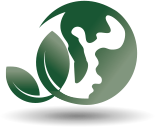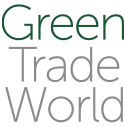
Absence of harmful substances
human health and the environment”
Description of the chemical substances under study
Chemicals are often used in the production of footwear to improve some of the characteristics of the product such as its performance and appearance. The manufacturer of the Green Trade World certified product must strive to use safe materials and is committed to comply with the regulations applicable to their footwear, thus reducing the use of substances that cause harm to human health and the environment.
The manufacturer must demonstrate that both their processes and their raw materials comply with the Criterion 6 of the EU Decision 2016/1349 (August 5, 2016), which establishes the criteria for awarding the EU Ecolabel for ‘footwear’. The criterion 6 consists in a Restricted Substances List (RSL).
The list refers to substances that can be used during the production process or that may be present in the final product. The RSL of the EU Ecolabel for footwear includes substances or groups of substances whose presence can be found in the final product, its materials or articles, or in the production formulas, and as applicable, they will be specifically restricted or verified.
The restrictions apply to:
- Production phases (for example, dyeing).
- The formulas used in footwear production phases (for example, auxiliary substances).
- Articles or homogeneous materials (for example, natural or synthetic rubber).
- The finished products.
The complete study on the applicability of this footwear regulation under the scope of the GREEN TRADE WORLD Type II Ecological Label, is summarized in the following Table 1, which lists each substance with the component or production phase where it can be found, with their corresponding limit values, verification and testing requirements.
These results can be verified in the product, by the corresponding test method (indicated in the standard), providing reliable and reproducible results.
| Substance (in the RSL) | Process/component were it can be present | Limit values | Assessment and verification |
|---|---|---|---|
| Azo dyes: carcinogenic aromatic amines | Final product. Dyeing process. | 30mg/kg | EN 14362-1:2012 |
| Phthalates | Final product. Compounds commonly added to plastics to increase flexibility. Sometimes used to facilitate molding of plastic. | < 0,10% weight by weight < 0,05% by weight for children |
ISO/TS 16181:2012 |
| Organotin compounds | Final product. Catalyst and heat stabilizers in plastics and rubbers. They can be used as biocides. | TBT < 0,025 mg/kg DBT, MBT, DOT, TPT < 1 mg/kg |
ISO/TS 16179:2012 |
| Short Chain Chlorinated Paraffins (SCCPs) C10-C13 | All production stages for leather, synthetic rubber, plastics, textiles and coatings. Non intentional use, can be found as contaminants. | Not detectable | ISO 18219:2015 |
| Medium Chain Chlorinated Paraffins (MCCPs), C14-C17 | Material processing for leather, synthetic rubber, plastics, textiles and coatings. | 1000 mg/kg | ISO 18219:2015 |
| Polycyclic aromatic hydrocarbons (PAHs) | Plastics and synthetic rubber, textiles or leather coatings. They can be present in rubber or plastic softeners and extenders, or as impurities in textile dyes. | c/HAP: < 1mg/kg < 0,5 mg/kg children Total: < 10mg/Kg < 1 mg/kg children |
AfPS GS 2014:01 PAK |
| Alkylphenolethoxylates (APEOs) | Production of textile products and fabrics with coating. Used as auxiliary agents (detergents, wetting agents, softeners, emulsifier /dispersing agents for dyes). | 25mg/kg | ISO 18254-1:2016 |
| Formaldehyde | Final Product/ textile. Preservation and finishing of textile materials. | < 20mg/Kg | ISO 14184-1:2011 |
| N-nitrosamines | Natural and synthetic rubber. Production process of natural or synthetic rubber. Often formed in the rubber vulcanization process. | Not detectable | EN 71-21:2013 |
Verification: Laboratory assay report and declarations of restricted substances
Declaration on the absence of harmful substances from suppliers
Every external supplier of material whose process could use harmful substances to health and the environment must guarantee by the corresponding supplier declaration, that the materials and its fabrication process do not contain any substance listed as restricted substances in Appendix Table 2 of the EU Decision 2016/1349 August 5, 2016.
The verification report must present the responsibility declarations of the different suppliers guaranteeing the absence of restricted substances.
Assays of the product carried out by the laboratory
In order to support and verify the environmental claim “Reduced use of Restricted Substances” and to demonstrate that the certificated product does not contain substances that can be harmful to health and the environment, substances that could potentially be present during the manufacturing process or in the final product have been tested to guarantee that the established concentration limits are met, according to textile and footwear regulation assays established in the Criterion 6 of the EU Decision 2016/1349 August 5, 2016.
The verification report must present the results of the finished product test and the components of the product category with the certificate.

